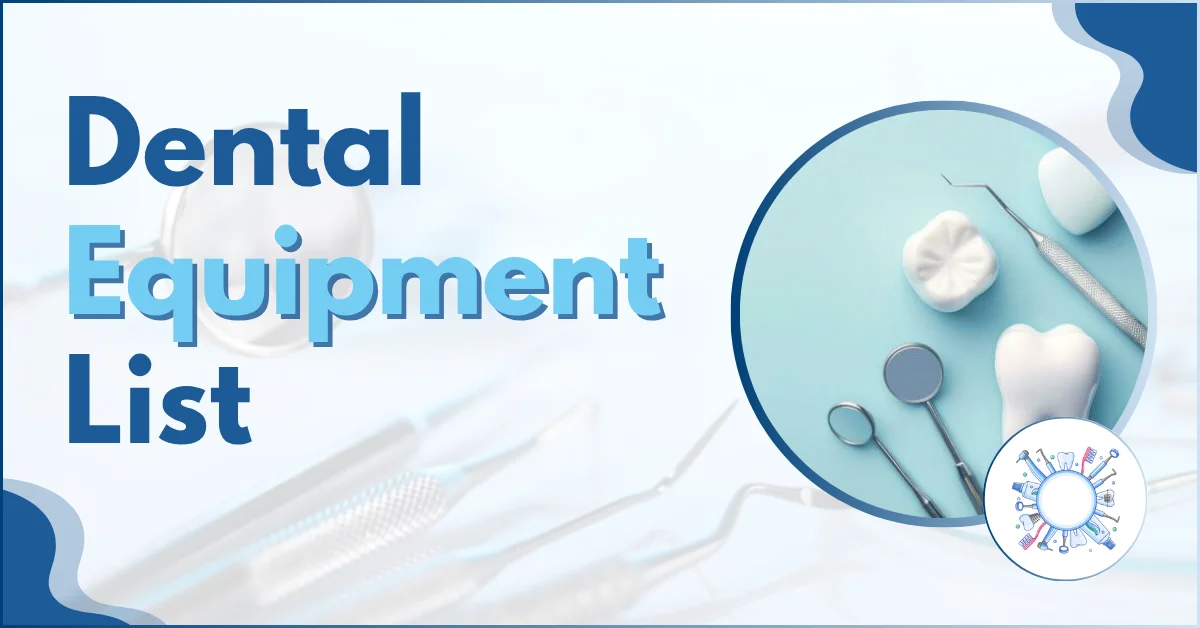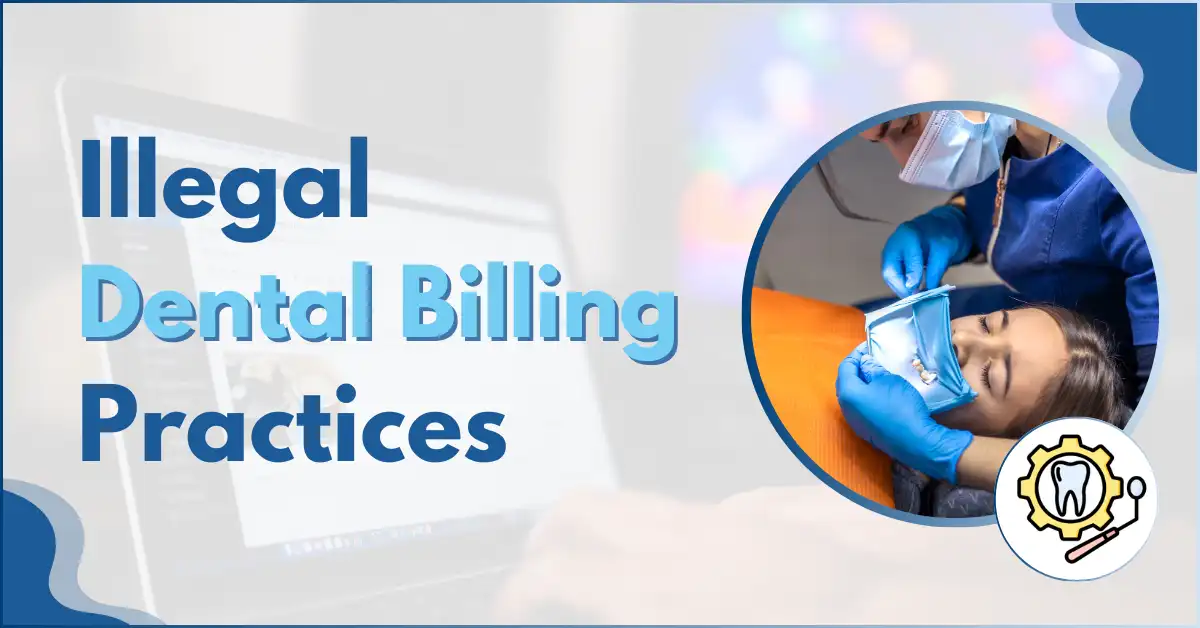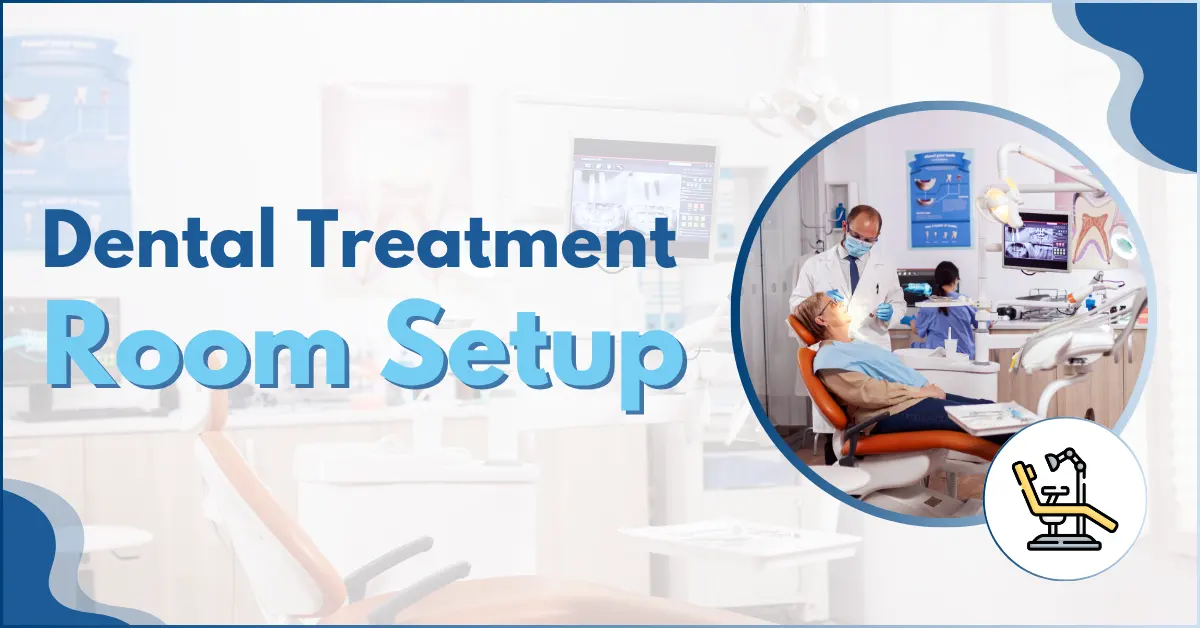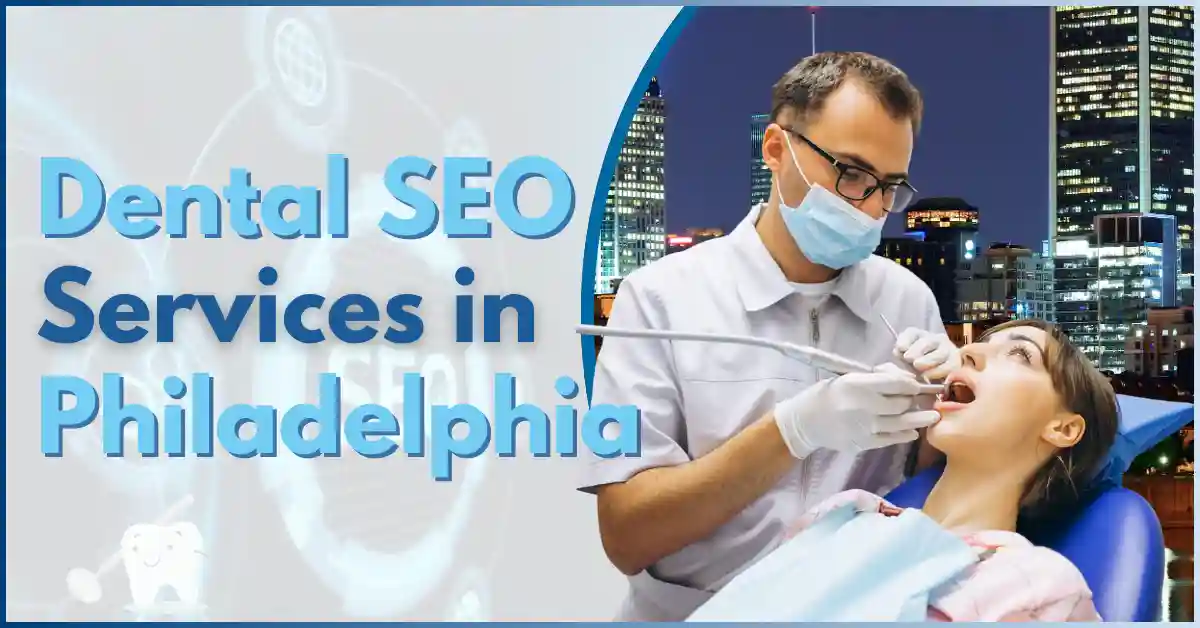If you want to open a dental clinic, you need a complete dental equipment list. Having the right tools and machines will help dentists treat patients better and faster.
In this article, we will provide you with a simple dental clinic equipment list with picture references, so you know what you need.
Let’s get started!
Comprehensive Dental Office Equipment Checklist
10 Essential Large Dental Equipment and Uses
| Large Dental Tool Names | Uses | |
| 1. | Dental Chair | An adjustable chair designed to comfortably position patients during dental procedures, complete with headrests and foot controls for height and angle adjustment. |
| 2. | Operating Lights | These overhead lights provide clear visibility in the oral cavity by minimizing shadows and ensuring focused illumination. |
| 3. | X-ray Machine | Allows dentists to capture detailed images of teeth, bone, and surrounding structures to diagnose hidden problems like cavities, infections, and bone loss. |
| 4. | Autoclave | A high-pressure steam sterilizer that kills bacteria, viruses, and fungi on dental tools, ensuring patient safety. |
| 5. | Air Compressor | Supplies compressed air to power various dental tools like handpieces and air-water syringes. |
| 6. | Ultrasonic Cleaner | Uses high-frequency sound waves to remove debris, blood, and tissue from instruments before sterilization. |
| 7. | Intraoral Camera | A small handheld camera that takes high-resolution images inside the mouth, aiding in diagnostics and patient education. |
| 8. | Dental Suction System | Removes saliva, blood, and debris from the mouth, maintaining a clean working area for the dentist. |
| 9. | Panoramic X-ray Machine | Captures a full 360-degree image of the patient’s entire jaw and teeth in one scan, useful for orthodontic and surgical planning. |
| 10. | Dental Lasers | Used for precise cutting of gum tissues, removing decay, and teeth whitening procedures with minimal discomfort. |
6 Advanced Dental Patient Comfort and Safety Equipment
| Equipment | Detailed Purpose | |
| 1. | Lead Aprons | Protects patients from radiation exposure during X-ray imaging. |
| 2. | Patient Bibs | Shield the patient’s clothing from water, saliva, and debris during treatments. |
| 3. | Emergency Kits | Includes medications, oxygen masks, and other first-aid items for handling medical emergencies. |
| 4. | Pulse Oximeter | Monitors a patient’s blood oxygen levels and pulse rate during treatment. |
| 5. | Defibrillator | A life-saving device used to restore a normal heartbeat in case of cardiac emergencies. |
| 4. | Blood Pressure Monitor | Checks the patient’s blood pressure to ensure it is safe to proceed with dental treatments. |
Complete List of 7 Dental Laboratory Equipment
| Equipment | Detailed Purpose | |
| 1. | Model Trimmer | Shapes plaster models to prepare accurate molds for prosthetics. |
| 2. | Dental Lathe | Polishes and finishes dentures, crowns, and bridges. |
| 3. | Curing Light | Emits blue light to harden resin materials quickly during fillings and bonding procedures. |
| 4. | Vibrator | Helps settle plaster or stone by removing air bubbles during model preparation. |
| 5. | Sandblaster | Cleans and prepares metal surfaces for bonding or repair. |
| 6. | Microscope | Allows lab technicians to perform highly detailed work, such as adjusting implants or tiny restorations. |
| 7. | 3D Printer | Prints dental models, surgical guides, crowns, and aligners using digital designs, improving precision and speed. |
7 Common Handpieces and Small Dental Tools
| Small Dental Tool Names | Functions | |
| 1. | High-speed Handpieces | Operates at 250,000-400,000 RPM for cutting teeth and removing decay swiftly. |
| 2. | Low-speed Handpieces | Operates under 40,000 RPM, perfect for polishing teeth, finishing restorations, and refining dental appliances. |
| 3. | Burs | Attachments for handpieces are available in various shapes to cut, shape, and polish tooth structures. |
| 4. | Scalers | Manually or ultrasonically remove plaque and tartar deposits from the tooth surfaces. |
| 5. | Dental Mirrors | Used for indirect vision and to reflect light onto desired surfaces. |
| 6. | Curettes | Specialized tools for deep cleaning beneath the gumline to treat periodontal diseases. |
| 7. | Air-Water Syringe | Sprays air, water, or both to rinse or dry the treatment area. |
8 Disposable Dental Items for Daily Operations
| Item | Detailed Purpose | |
| 1. | Gloves | Ensure hygiene and protect both the dentist and patient from cross-contamination. |
| 2. | Masks | Prevent inhalation of germs and protect against splashes. |
| 3. | Cotton Rolls | Keep the mouth dry during procedures by absorbing saliva. |
| 4. | Suction Tips | Used in conjunction with suction systems to keep the mouth clear. |
| 5. | Disposable Syringes | Deliver local anesthesia safely. |
| 6. | Gauze Pads | Control bleeding and clean the surgical area. |
| 7. | Face Shields | Provide additional facial protection for dentists during treatments. |
| 8. | Saliva Ejectors | Help maintain a dry work area by continuously removing saliva. |
7 Specialized Prosthodontics Equipment & Tools

- Impression Trays: Hold impression materials to capture a mold of the teeth and gums.
- Articulators: Simulate jaw movements to create accurately fitting crowns, bridges, and dentures.
- Wax Carvers: Sculpt wax models used in the creation of dentures and prosthetics.
- Face Bows: Transfer facial structure relationships to the articulator.
- Dental Flask: Essential for processing complete or partial dentures.
- Polishing Brushes: Give dentures and crowns a final smooth finish.
- Casting Rings: Hold investment material during the casting process of dental restorations.
7 Complete Orthodontic Supplies List

- Brackets: Metal or ceramic pieces attached to teeth to guide their movement.
- Archwires: Connect brackets and apply pressure to move teeth into alignment.
- Pliers: Used to adjust and cut archwires.
- Ligature Ties: Secure the archwire to the brackets.
- Orthodontic Bands: Metal rings placed on back teeth to anchor braces.
- Separators: Rubber bands or springs that create space between teeth before placing bands.
- Retainers: Custom devices that maintain teeth alignment after braces are removed.
8 Essential Consumable Materials in Dentistry
| Consumable | Detailed Purpose | |
| 1. | Filling Materials | Restores decayed tooth structures. Examples include amalgam and composite resin. |
| 2. | Etchants | Prepare tooth surfaces for better bonding of fillings or sealants. |
| 3. | Bonding Agents | Improve adhesion between the tooth and restorative materials. |
| 4. | Composite Resins | Tooth-colored materials are used for aesthetic dental fillings. |
| 5. | Impression Materials | Used to create dental molds. Common types include alginate and silicone. |
| 6. | Local Anesthetics | Temporarily numb specific areas to prevent pain during procedures. |
| 7. | Fluoride Varnish | Strengthens enamel and helps prevent cavities. |
| 8. | Sealants | Protective coatings are applied to molars to prevent decay. |
5 Diagnostic Instruments and Its Specific Functions
- Mouth Mirrors: For viewing hard-to-see areas inside the mouth.
- Probes: Check for cavities, pockets, and other abnormalities.
- Explorers: Detect early signs of decay.
- Digital Thermometers: Monitor body temperature before procedures.
- Periodontal Probes: Measure the depth of gum pockets to assess gum health.
5 Critical Operative Dental Equipment
- Excavators: Remove decayed tissues.
- Condensers: Compact filling materials into cavities.
- Burnishers: Smooth and polish fillings.
- Chisels and Hatchets: Shape and refine cavity preparations.
- Matrix Bands: Help create the correct shape and contact in fillings.
5 Key Endodontic Supplies for Root Canals
- Endo Files: Clean and shape the root canals.
- Paper Points: Dry the cleaned canals.
- Gutta-percha Points: Fill and seal the canal space.
- Rubber Dam Kits: Isolate the treatment area to keep it dry.
- Apex Locator: Accurately measures the length of the canal.
5 Prosthodontic and Laboratory Essentials
- Dental Stone: Provides durable models for making dentures.
- Wax Sheets: Form molds for creating prosthetics.
- Polishing Wheels: Used to polish metals and acrylic materials.
- Casting Machines: Produce crowns and bridges by melting and shaping metals.
- Ceramic Furnace: Bakes ceramic materials for durable crowns.
7 Dental Surgical and Extraction Instrumentation
- Forceps: Extract teeth with minimal trauma.
- Elevators: Loosen teeth before extraction.
- Scalpels: For precise surgical incisions.
- Periosteal Elevators: Separate soft tissue from bone.
- Hemostats: Clamp blood vessels to control bleeding.
- Bone Files: Smooth bone edges after extraction.
- Surgical Blades: Provide precise cuts during surgery.
6 Oral Surgery Equipment List
- Surgical Lights: Illuminate the surgical site.
- Bone Chisels: Shape bones during advanced surgeries.
- Sutures: Close surgical wounds.
- Suction Devices: Keep the surgical area clean.
- Implant Kits: Complete set of tools for placing dental implants.
- IV Sedation Equipment: Provides sedation to ensure patient comfort during procedures.
4 Examples of Specialized Dental Equipment List
- Laser Therapy Equipment: Dental lasers treat gum disease and remove tissue. They cause less pain than traditional methods. They also help wounds heal faster.
- Intraoral Cameras: These tiny cameras take pictures inside the mouth. They help patients see their dental problems. This makes treatment explanations easier.
- Digital Impression Scanners: These devices make digital copies of teeth. They are faster than traditional impressions. Patients find them more comfortable.
- Cone Beam CT Scanner. This machine takes 3D x-rays of teeth and jaws. It gives more information than regular X-rays. It helps plan complex procedures.
Smart Inventory Checklist for Your Dental Practice
| Item | Quantity | |
| 1. | Gloves | 200 pairs |
| 2. | Masks | 150 pieces |
| 3. | Gutta-percha Points | 300 pieces |
| 4. | Composite Resins | 20 syringes |
| 5. | Local Anesthetic | 50 vials |
| 6. | Filling Materials | 40 units |
6 Dental Clinical Furniture Must-Haves
- Cabinets: For organized storage.
- Stools: For dentists and assistants.
- Trolley Carts: Mobile storage for tools.
- Instrument Trays: Keep tools organized during procedures.
- Reception Desk: First point of contact for patients.
- Display Racks: Showcase oral care products.
What Should You Consider When Purchasing Dental Equipment?
What Kinds of Dental Equipment Are Necessary?
The most important equipment is the dental chair, dental unit, x-ray machine, and sterilization device. They are necessary for routine dental treatment. Without them, you are not able to treat patients safely.
Diagnostic equipment, such as mirrors and probes, is also very important. They help in identifying issues early. Patients find it easier and cheaper to treat things early.
Conclusion: Dental Equipment List
A comprehensive dental equipment list guarantees smooth, safe, and efficient dental practice. Utilizing a dental supply list template helps to manage inventory efficiently.
Knowing the dental tools’ names and uses increases the productivity of the dental team. You can buy these supplies and equipment from different online dental equipment shops. But first, do your research, compare prices, and then buy.
Want to Grow Your Dental Clinic Online?
Partner with us for expert SEO strategies tailored for dentists. Boost your visibility, attract more patients, and grow your practice effortlessly.








